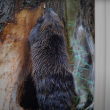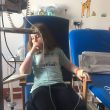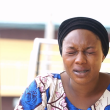In February the streets of Moscow saw members of the public again show their disdain for the impending re-election of Vladimir Putin in scenes reminiscent of the protests in December 2011.
On December 10th 2011 protesters first took to the streets of Russia, an act of defiance that had not been seen for many years. As elections draw closer, taking place on March 4th 012, the BBC and other media outlets have documented that on February 4th 2012 there were yet more protests against Putin’s quest to become President for a second term.
Johanna Horton*, 22, an international relations student at Westminster University was there, studying for a year at Moscow state University, and took part in the protests. Ms Horton said: “Russians have been referring to the demonstrations as “meetings” rather than using the Russian word “demonstratsiya”. At first I thought this a little strange, but after seeing the protests, I found that the term “meeting” describes the nature of the anti-government gatherings pretty well.
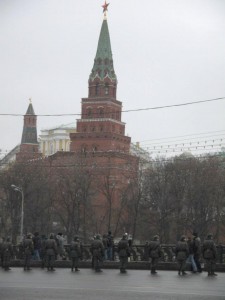
“Considering the frustration and anger that many people in Russia are feeling at the moment, the atmosphere was entirely non-aggressive, the people were calm and the message was clear.”
Ms Horton documented the protests on her camera believing she saw that Russia was possibly about to see the same revolutions as seen in the Arab Spring this year.
Many of the Arab Spring revolutions were headed by fractions of the public upset with actions of their governments and the corruption in their ranks.
As Ms Horton described, the protests in Russia were against corruption in Russia’s government. Ms Horton said: “The protests were caused by United Russia’s victory in the parliamentary elections in December. There were reports of ballot stuffing and rigged voting by observers.”
It is not common for the Russian people to speak out against their leaders, especially Vladimir Putin. Many of those that did speak out against his presidency faced harsh criticism from his government and his supporters.
Ms Horton commented on this when describing her surprise at the protest on the streets of Moscow, she said: “I found the protests to be quite moving in a way. I was so impressed by how many people took part, despite the fear of arrest, and by how peacefully they were conducted.”
After thousands turned out to protest in December it seemed that many more felt empowered to show the Prime minister what they thought of his plans to become President again. On February 4th the BBC reported that thousands were again out on the streets in fresh protests.
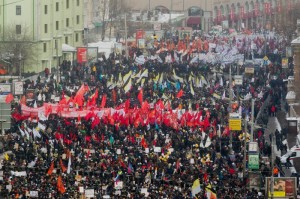
In near -20 degrees temperatures both sides of the political spectrum, anti and pro-Putin took to the streets to show their support or distain for the United Russia Political party.
Organisers of the anti-Putin Rally said their numbers swelled to over 100,000, much like the first protests in December. However, Moscow Police reported just 23,000 supporters on the rally
Police also said that the pro-Putin rally had a gathering of over 90,000 supporters, however, rival protesters suggested that this was much lower. The BBC reported that some people had come forward with stories about being forced to attend the rally or face being fired.
In response to this Ms Horton said: “It wouldn’t surprise me that there are stories surfacing like that. It also doesn’t surprise me that they are playing down the numbers of the anti-Putin Rally whilst playing up their numbers.
“The reason for the protests is about corruption and ballot stuffing so for them to exaggerate the number of people protesting for and against Putin is pretty ironic really.”
As the pictures from Ms Horton show, whatever the official number in the December protests, there were many people out to show their anger and frustration at the idea of ballot stuffing.
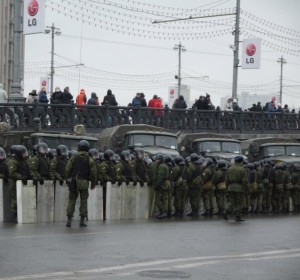
Images circulating in many of the media outlets show tens of thousands on the streets of Russia in -20 degrees temperatures, showing that both parties are willing to down play support for the opposition.
What is clear is that these are scenes that Russia has not seen in many years but that may well be seen for many months to come as Russia and the world wait to see if Putin will regain power over Russia and it’s people.
*Name changed at request of interviewee.
Related articles
- Pro Putin supporters hold Moscow rally (russianreport.wordpress.com)
- Russians Rally for and Against Putin, Despite an Icy Day (time.com)


